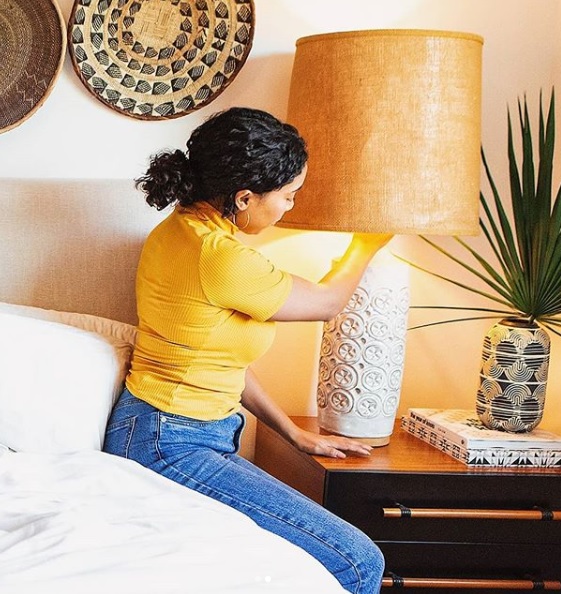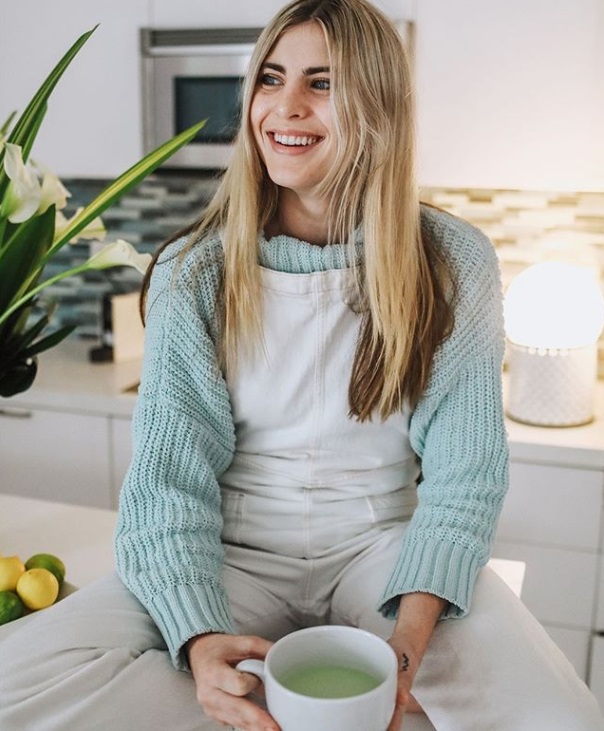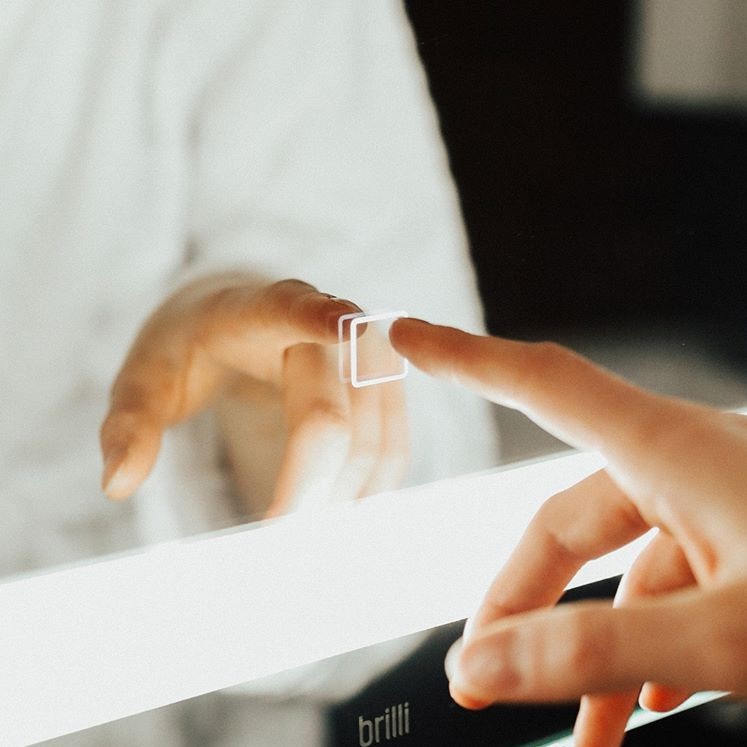This article is written in partnership with Brilli—they’re dedicated to helping more people feel great inside, and we’re proud to work with them.
~ ed.
The lighting we’re living with daily is impacting our health negatively.
But the best solution is a bit more holistic than simply switching off our screens at night or wearing jerky orange glasses everywhere.
By upgrading our lighting game to healthy home lighting designed to improve wellness, we can get our rhythms back in sync to improve our natural biological functions.
“Light should do more than illuminate our surroundings.” ~ Josh Goscha, Inventor & Founder of Brilli
Most of us are not aware that indoor lighting plays a key role in our natural rhythms. In fact, up to 80% of our circadian rhythm is set early and late in the day, when we’re likely at home.
Many of our health and wellness frustrations may come down to biological misalignment, according to the experts in neuroscience, lighting science, and circadian health who have had a hand in developing Brilli—the only light that offers the widest spectrum of well-being benefits without sacrificing light quality and energy efficiency.
Get an exclusive 15% off Brilli lights with code EJ15 >>
We’ve heard of our circadian rhythm and have a vague idea that blue light is a bad thing for our health…right? As with most wellness trends and trivia, that’s not quite the full picture.
“Beyond just brightness and color, we need to consider how all attributes of light including quality, color rendering, flicker, glare, and the timing of exposure are positively or negatively impacting the human body, affecting things such as our alertness, feelings of well-being, productivity, and sleep quality.
Throughout the day, the body requires consistent, multiple cues to modulate and regulate different hormonal neuronal, and metabolic systems. Proper lighting is an essential part of creating the optimal conditions for our health and well-being.” ~ Dr. Doug Steel, Neuroscientist
1. Blue light is good for us—at the right time.
Sunlight—like clean air and water—is vital for us to survive and thrive and is about 25 percent blue light. It governs everything from our heart rate, body temperature, and hormones, to our blood pressure, pulse, and appetite.
Light also acts as an instinctive timekeeper for our circadian rhythm, the 24-hour internal clock that runs in the background of our brains, controlling our sleep-wake cycle, sleep quality and metabolism, among other things.
Sunrise in particular works to suppresses melatonin—the sleepy hormone—first thing in the morning, which normally would help us wake up feeling alert and start our day productively.
So, when we’re waking up in the dark and switching on our bedroom, bathroom, living room, or kitchen lights, we’re probably not getting the right amount of blue light at the right time. Then when we’re switching our lights on after dark, we’re probably getting too much at the wrong time. It’s no wonder we’re struggling with a weird combination of exhaustion and overstimulation.
Brilli has developed a unique light to help us start the day feeling brighter and more charged up, naturally. Charge Up is their daytime light: cool, crisp, blue light rich, designed to simulate the effects of sunrise. They recommend using this light in the office, kitchen, gym, and some common areas to amp up energy and focus.
They have also developed their Look Up One-Touch Vanity Mirror with an energy boost function, that gives you a wash of light while you’re getting ready to naturally amp up (equal to a cup of coffee).
2. For optimal health, take all the colors of the rainbow.
Blue light is just one part of the full spectrum of light we need to thrive. Unfortunately for our well-being, most modern lighting focuses solely on color temperature or energy efficiency while ignoring the positive health and well-being impacts of biologically-aligned light.
And we can’t just add and subtract different colored lights to hack our health. That’s a bit like adding Vitamin D to fruit loops. What we need is a balanced, wholesome blend of all colors of the spectrum, at the right ratios, in the highest quality dosage possible.
“Color quality in lighting matters to a person’s wellbeing, but measures of color rendition—like fidelity, preference, and discrimination—don’t receive much attention. The impact goes beyond the way a space looks and feels – affecting things like a person’s ability to distinguish between two similarly colored medications, or their ability to distinguish between fruit that is ripe or going bad.” ~ Dr. Tony Esposito, Lighting Color Scientist
Brilli’s WellBright Spectrum™ is uniquely tuned to provide visible and non-visible light that benefits the mind, body, and mood at the right time of day. Brilli beats the daylights out of other LED’s, not just in wavelength, but also in visual appeal and comfort.
For those sensitive to flicker, Brilli LED’s have no visible flicker (a major contributor to headaches caused by eyestrain). UL, the Global Safety Science organization, identifies “Low Flicker Risk” as a flicker percent of less than 8% at 50Hz and less than 10% at 60Hz. All Brilli products have a flicker percent of less than 1% at 50Hz.
One light, in particular, is developed specifically with the help of experts to run the full gamut, helping to get our inner clocks back on track and balance our inner well-being. Recommended for use in shared rooms morning, noon, and night, Get In Sync allows you to customize your light, simulating the effects of the full spectrum of light from sunrise to sunset.
3. Winding down: the secret to having more energy when we need it.
We’re cyclical beings, and if our bodies and minds are going to work to their full potential, they need enough rest and recuperation. While we can’t do much about the bad quality, flickering, blue heavy LED lights we’re exposed to at work and in public, we can control the lighting in our most sacred spaces: our homes.
“The majority of our phase resetting response to light, and therefore the setting of our biological clock, likely happens in the home. Because office and schools may have less to do with setting our biological clock, focusing on how one can improve their circadian rhythm synchronization at home is important.” ~ Dr. Shadab Rahman, Circadian Scientist
Most of us are still using one kind of indoor light throughout our homes though, so even if we’re switching off our screens early with all good intentions, our bedroom lights may be keeping us up, long after we’ve switched them off.
Brilli’s Wind Down bulbs are the stress-free solution here: rich in the full spectrum that the soft glow of natural evening light offers, minus the blue light that can interfere with restful sleep, it allows us to unwind naturally at the end of the day. These lights are designed specifically for bedrooms and any space we use for relaxation.
The best thing about Brilli lights isn’t their impact on our own well-being, though. The best thing is that when we use them to improve our own lives, we also improve the lives of others through their partnership with Watts of Love, who bring light to communities that lack access to resources like electricity, education and economic independence. In fact, seven people are impacted by every individual purchase you make.
After all, light is vital to life—and that light should shine equally on all.
Feeling happier and healthier really could be as easy as turning on the lights.
Get an exclusive 15% off Brilli lights with code EJ15 >>






Read 5 comments and reply